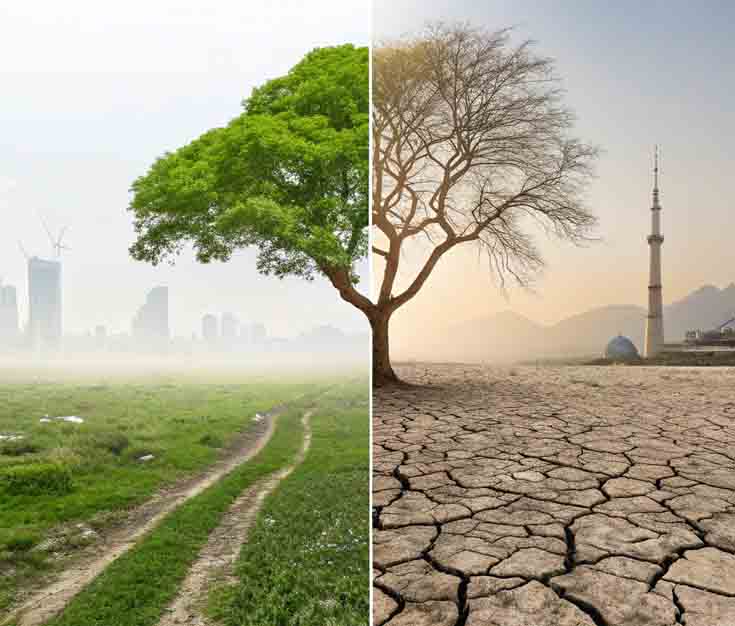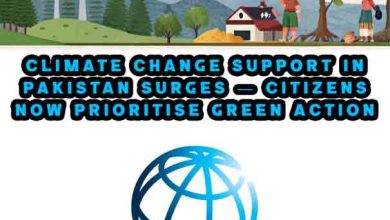Green or Gone? Our Carbon Challenge in Pakistan
Green or gone? Our carbon challenge is real. Pakistan faces climate chaos, economic strain, and global carbon compliance hurdles. Time to act boldly.
Introduction: A Country in Crisis
Green or gone? Our carbon challenge looms larger than ever. For decades, Pakistan has weathered deep economic troubles—low investments, rising inflation, a fragile export base, and weak industrial growth. But now, a new crisis has intensified the pressure: climate change. And it’s no longer a looming threat—it’s an excruciating reality.
From extreme floods to choking smog, Pakistan stands among the world’s most climate-vulnerable nations. With outdated industries and fossil fuel dependence, the economic and ecological balance hangs by a thread.
Climate Crisis: A Global Pandemonium
The climate crisis is not exclusive to Pakistan. Globally, climate disruptions have reached alarming levels. In 2024, average global temperatures officially exceeded 1.5°C above pre-industrial levels, a key threshold outlined in the Paris Agreement.
Despite this, PwC’s Net Zero Economy Index 2024 revealed that the global decarbonisation rate was just 1.02%, far below the 6.9% needed annually to meet the 2°C goal. This lag reflects a dire need for change—especially for nations like Pakistan where the impact is immediate and severe.
What is CBAM and Why It Matters
Enter CBAM – the Carbon Border Adjustment Mechanism, introduced by the European Union as part of its “Fit for 55” climate package. CBAM is designed to reduce GHG emissions from imported goods like steel, cement, aluminium, fertilizers, and electricity.
Why should Pakistan care?
-
The EU accounts for 15.3% of Pakistan’s exports.
-
CBAM tariffs will start in 2026, with full implementation by 2034.
-
Only 1.23% of exports currently fall under CBAM, but inclusion of textiles (60% of exports) is likely.
Long-tail Keywords Used:
-
“CBAM in Pakistan”
-
“Carbon Border Adjustment Mechanism exports”
-
“Pakistan climate finance needs”
Pakistan’s Exposure to Carbon Costs
A recent SDPI study warns that developing countries could lose up to $10.2 billion due to CBAM, with Pakistan among those moderately at risk. Here’s why:
-
Outdated technology in steel and textile industries
-
98% of Pakistan’s energy from non-renewable sources
-
Lack of carbon accounting frameworks
-
Weak export competitiveness due to high electricity tariffs

Challenges Across Key Sectors
Textile Industry
-
60% of exports
-
Lack of carbon tracking across supply chains
-
High energy consumption from fossil fuels
Steel Industry
-
Uncompetitive globally
-
Heavily reliant on scrap and fossil fuels
-
Needs 70–80% energy shift to renewables for CBAM compliance
Energy Sector
-
Dependence on imported oil and gas
-
High tariffs discourage green adoption
-
Grid remains largely non-decarbonised
Turning Challenges into Opportunities
Despite these challenges, CBAM compliance could be the turning point for Pakistan’s green industrial revolution.
Policy Recommendations
-
Establish a national carbon pricing system
-
Provide tax incentives for energy-efficient tech
-
Promote mandatory sustainability reporting
-
Build a carbon compliance authority for all major industries
International Collaboration
-
Partner with UNDP, OICCI, and other organizations
-
Conduct capacity building workshops on net-zero targets
-
Leverage climate finance mechanisms for tech upgrades
Support for SMEs
-
Offer subsidies for cleaner tech
-
Simplify CBAM compliance for small exporters
-
Encourage public-private partnerships
The Way Forward
To thrive in a carbon-conscious world, Pakistan must:
-
Modernize its industries with clean technologies
-
Invest in renewable energy to shift its energy mix
-
Build transparent carbon measurement systems
-
Launch pilot projects in textiles and steel to test carbon compliance
-
Push diplomatic efforts to negotiate fair CBAM terms
Final Thoughts
Pakistan is at a pivotal juncture. The carbon challenge is real—if ignored, the country risks being left behind in global trade and climate justice. But if tackled wisely, CBAM can catalyse green innovation and economic revival.
Summary of Action Items:
-
Introduce carbon tax with rebates
-
Implement industry-specific decarbonisation plans
-
Establish third-party carbon verification systems
-
Mandate ESG and sustainability reporting
-
Drive climate-focused reforms across all sectors
Pakistan’s success depends on one thing: whether we go green or become gone in the global race for climate resilience.
🔗 Related Articles:
🔗 External Resources:








